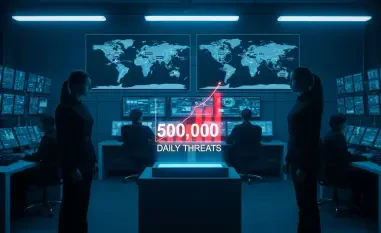As technology continues to evolve at a rapid pace, organizations must stay ahead of cybersecurity challenges by anticipating threats and adapting their strategies accordingly. A recent report by experts from BeyondTrust, including Morey J. Haber and Christopher Hills, highlights new and evolving security threats that are expected to impact businesses by 2025 and beyond. The report emphasizes the technological transitions essential for maintaining robust cybersecurity defenses.
Emerging Cybersecurity Threats
The report forecasts several significant cybersecurity threats. One of the most notable is the shift in the use of AI, termed “Artificial Inflation” of AI. Experts predict a reduction in the hype surrounding AI by 2025. While AI will continue to streamline basic operations and workflows, many of its promised advanced capabilities in security may not materialize. The focus is expected to move towards practical AI applications that enhance security measures without overwhelming organizations with marketing exaggerations.
Another pressing concern is quantum computing. Quantum computing poses a substantial risk to current cryptographic frameworks. The National Institute of Standards and Technology (NIST) is set to release post-quantum encryption standards in 2024. Organizations, especially in the financial sector, must prepare for these quantum threats by swiftly adopting new standards to protect sensitive data.
A rising trend that complicates identity security is reverse identity theft, in which attackers combine stolen data with other personal information to create false digital identities. This trend requires organizations to reassess their identity and access management strategies to prevent unauthorized access and privilege escalation attacks.
Challenges with Technology Transition
The end of support for Windows 10 is another looming challenge. Microsoft is expected to discontinue support for Windows 10 by late 2025, leaving many devices vulnerable to cyberattacks. Organizations may increasingly struggle with outdated systems that are susceptible to these threats. To maintain security integrity, companies are advised to either upgrade to Windows 11 or consider alternative operating systems, ensuring the continued protection of their critical infrastructure during this significant hardware overhaul.
Future of Cyber Insurance
The evolving landscape of cybersecurity also impacts cyber insurance policies. As threats related to AI and quantum computing unfold, insurers must reassess their coverage terms to accommodate new risks. This pressure is likely to drive organizations to adopt more robust cybersecurity practices to secure and maintain their insurance coverage.
Shifts in Threat Dynamics
The report also highlights a decline in the dominance of malware as a primary threat vector. Instead, there is a growing focus on identity vulnerabilities. In addition, advancements in satellite connectivity could pose new challenges to traditional broadband networks, introducing novel attack surfaces for cyber exploitation. This shift underlines the need for adaptive security strategies that can address evolving threats effectively.
Overarching Trends
A transformative shift in cybersecurity strategies is the overarching trend identified in the report, moving towards more resilient, practical, and adaptive measures. The decline of malware and the rise of identity-related vulnerabilities signify a change in the threat landscape. Quantum computing is emerging as a critical concern, requiring revisions in cryptographic defenses and standards to stay ahead.
Main Findings
The main findings of the report can be summarized as follows:
- AI’s role will become more grounded in practical applications rather than over-hyped capabilities.
- Quantum computing will challenge existing security frameworks, pushing organizations to adopt post-quantum standards.
- Reverse identity theft will become a significant threat, complicating identity management strategies.
- The end of support for Windows 10 will necessitate a major technological overhaul to prevent vulnerabilities.
- Cyber insurance policies will evolve in response to new threats, driving organizations towards better cybersecurity practices.
Recommendations
As technology continues to advance rapidly, it’s crucial for organizations to stay ahead of the curve regarding cybersecurity challenges. This demands anticipating potential threats and adapting strategies in response to those emerging dangers. A recent report authored by experts from BeyondTrust, including Morey J. Haber and Christopher Hills, brings to light new and evolving security threats poised to impact businesses by 2025 and beyond. The report underlines the importance of technological transitions essential for maintaining robust cybersecurity defenses.
Organizations are urged to stay vigilant and keep evolving their cybersecurity measures as threats become more sophisticated. This involves not just adopting advanced technologies but also ensuring that employees are trained to recognize and respond to these new threats effectively. Proactive measures, including regular security audits, updated software, and a culture of cybersecurity awareness, are critical. The BeyondTrust report serves as a crucial guideline, reminding businesses that the battle against cyber threats is ongoing and requires continuous effort, innovation, and adaptation to stay protected in an ever-evolving landscape.













